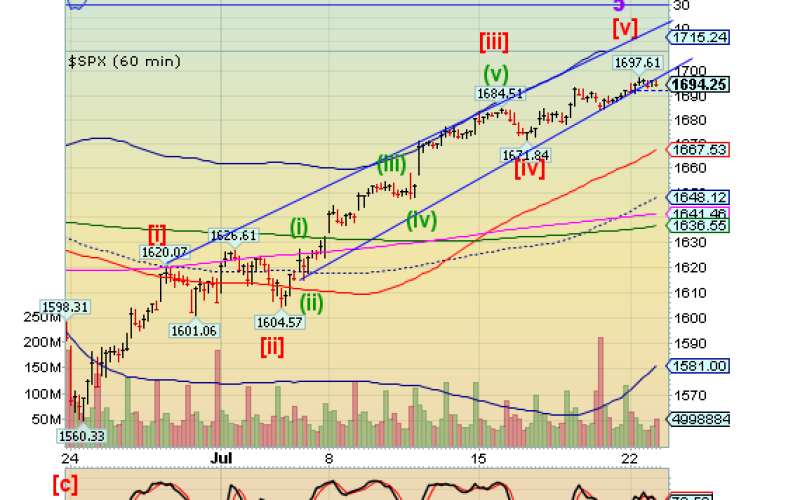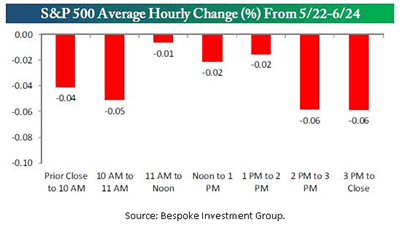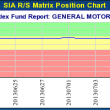“D-Day +1”
by Jeffrey Saut, Chief Investment Strategist, Raymond James
July 22, 2013
“At Normandy it was rough at about 11 a.m. on D-Day plus 1.”
. . . John W. Hargrove, military veteran
I have termed last Friday (7/19/13) as D-Day because for the past few months my work has targeted that date as a potential turning point for the equity markets. Given the upside stampede, my sense was/is that “turn” would be to the downside for the first meaningful pullback of the year. In past missives I have elaborated on the reasons and clearly the media has “listened.” Indeed, I was bombarded with media requests (TV, radio and print media) last Friday, but alas Verizon’s video uplink wasn’t working so the only “gig” I did was a phone interview with CNBC. Nevertheless, the demand for someone with such a non-consensus “call” speaks volumes about the current bullish sentiment roaming the Street of Dreams. So here we are at D-Day + 1 with the Maginot Line drawn around the current trading level of the S&P 500 (1692.09), which is near the May 22, 2013 intraday reaction high of 1687.18. I have stated the only question in my mind is if the “buying stampede” ends with a whimper or a bang. The ideal trading pattern would be a” bang” with the SPX giving us a blue heat, upside blow-off rally, into my long envisioned 1700 – 1730 zone. For this reason I have, as of yet, not layered in downside hedges into portfolios, even though I have been raising cash. Remember, however, if we get a pullback, at least in my view, it is for buying because I continue to think the odds we are in a new secular bull market remain high. So what should be on your buy list?
Well, over the past few years I have mentioned numerous mutual funds I own, and know the portfolio managers (PMs) of those funds. Recall, last year I suggested it was time to buy the banks after avoiding most of them for more than 13 years. In addition to the individual bank names, I recommended (and own) my friend David Ellison’s fund – the Hennessy Small Capitalization Financial Fund (HSFNX/$24.83) – that is up 37.58% over the past 12 months as compared to the Nasdaq Bank Index, which is up 35.90% over the same time period. I met David back in the 1980s and have liked his investment style ever since. Not only does he know more about banks than most analysts, but he is a risk-adjusted PM. Indeed, in the 1Q08 David raised 40% cash in his funds. I also own the Goldman Sachs Rising Dividend Fund (GSRAX/$17.50) managed by another friend, Troy Shaver. Troy narrows his investable universe to companies that have increased their dividends by 10% (or more) per year for the past 10 consecutive years. Then, his team does the fundamental analysis of those companies, winnowing the list down to the stocks he buys.
Steve Vannelli manages the GaveKal Knowledge Leaders Fund (GAVAX/$13.36), which I own, that invests in companies accruing intangible capital. Knowledge leaders are a group of the world’s leading innovators with deep reservoirs of intangible capital. These companies often possess competitive advantages such as strong brand, proprietary knowledge, or a unique distribution mechanism. Knowledge leaders are largely service-based and advanced manufacturing businesses, often operating globally. While it is not intangible capital centric, Tom O’Halloran manages Lord Abbett’s Growth Leaders Fund (LGLAX/$19.36), which seeks to identify innovative and transformative companies that are recognized market leaders expected to experience a sustainable period of above-average earnings growth. Often such companies do indeed accrue intangible capital. Next month I am going to host a conference call with Tom to discuss his fund, and some individual stock ideas, much like what I did with Putnam’s David Glancy a number of months ago.
Speaking of Putnam, one of the two Putnam funds I own is the Putnam Capital Spectrum Fund (PVSAX/$31.64), managed by one of the best stock pickers I know, David Glancy. David targets the investment potential of companies that use a significant amount of debt in their capital structure to achieve their business goals. The other Putnam fund I own, which is the only bond fund I currently own, is Bill Kohli’s Putnam Diversified Income Trust (PDINX/$7.83). Unlike most of the other bond funds that have been crushed since the May 1st interest rate ratchet, PDINX has done exactly what it was supposed to do. Indeed, PDINX was/is positioned for higher interest rates such that despite the rate-rise, which has left most bond funds with negative year-to-date returns, PDINX is still up 4.13% YTD before sales charges as compared to the Barclays U.S. Aggregate Bond Index, which is down 2.44% over the same time period.
While I used to have a lot of exposure to the international markets, and particularly the emerging and frontier markets, the only exposure to international equities that I currently have is in the MFS International Diversification Fund (MDIDX/$15.32) managed by my friend Thomas Melendez. The fund seeks capital appreciation via diversification within the international asset classes with some exposure to the emerging and frontier markets.
Of course there are many other funds, and good portfolio managers I know, but last week I met with two PMs that I have only had a couple of conversations with previously. Yet, I really liked their investment style when I first met the team a year ago. Regrettably I didn’t buy their fund, but I should have. The fund in question is the Horizon Kinetics Paradigm Fund (KNPAX/$29.63). The thing I think is really cool is that the PMs screen for companies where the management of said companies have a large stake in the company’s stock (read: owner operators). Over time, such companies’ stock price has had a tendency to do very well. The co-portfolio managers are Peter Doyle and Murray Stahl. I met with the sagacious Murray Stahl about a year ago after reading his book, “How They Did It,” a book with 26 short essays about great investors and operators of companies. In fact, a number of stocks I have recommended over the last 12 months have come from the good folks at Horizon Kinetics.
As for stocks, I sold the last of my trading positions on last Thursday’s Dow Theory “buy signal,” not because I think we are entering a bear market, but because of my long-targeted timing point of July 19th. I believe that date presents the best window for the first meaningful pullback of the year. The reasons for that strategy have been chronicled in these missives for many weeks. In addition to the indicators, my friends at the invaluable Bespoke organization note:
“There’s a common market axiom known as the ‘Smart Money Indicator’ that suggests that the ‘smart’ (institutional) money trades at the end of the day, while the ‘dumb’ (retail) money trades at the open. . . . We looked at the intraday performance during the 5/22-6/24 pullback to see if there was excessive selling at the beginning or end of the trading day. Here we didn’t find a big discrepancy. As shown in the chart, there was slightly more selling in the final two hours of the day than the first two hours of the day, but all four of these hours saw declines of roughly 0.05%. If the ‘Smart Money Indicator’ is correct, both the retail and institutional investor were selling during the pullback, but the retail investor has been doing all of the buying during this bounce.”
The call for this week: I think the SPX is very susceptible to a false upside breakout that carries it into the 1700 – 1730 zone. If so, we should find out if that is correct this week. Any close below 1680 by the SPX would increase the odds that a false upside breakout has occurred. Moreover, any pullback below the 1630 level (a 50% correction of the recent rally) would confirm that the intermediate cycle has topped. This week should tell us.
Copyright © Raymond James
















